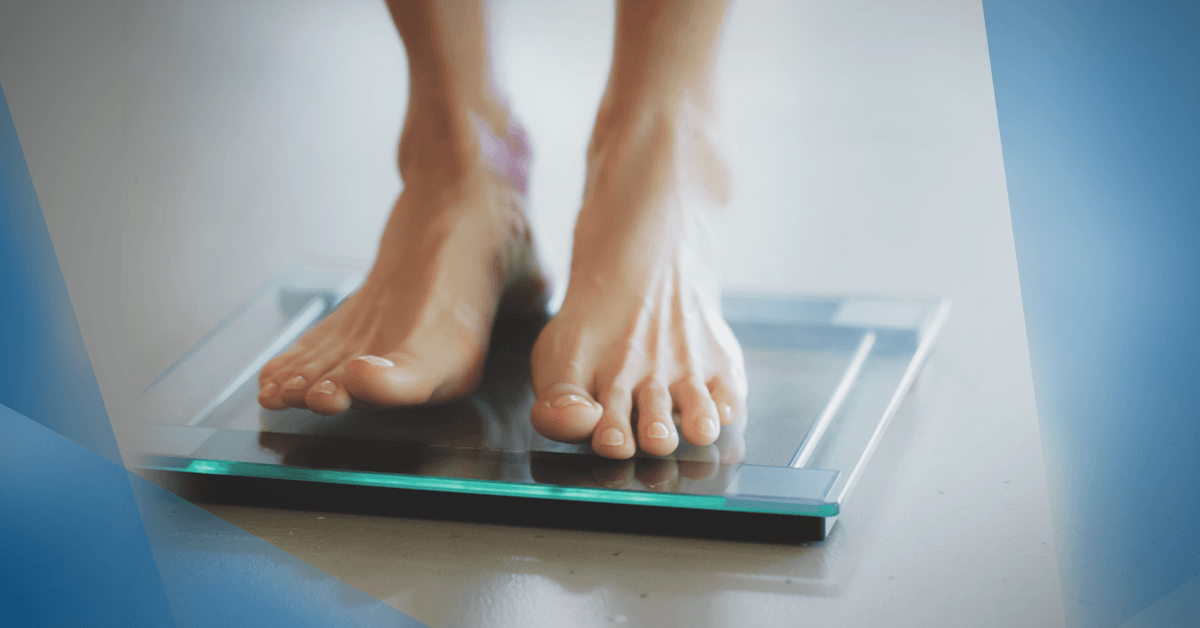Key points:
- Glycogen plays an outsized role in short-term weight fluctuations.
- Going on and off low-carb diets can cause big changes in glycogen levels.
- It takes a few days for body weight to stabilize after any major shift in diet or exercise.
Almost every religious tradition has someone who plays the role of the trickster. Nordic myths have Loki. Coyote stirs things up in Native American stories. Even the Bible kind of plods along until Satan punks Eve by convincing her that fructose is the key to knowledge.
In the religion of diet, glycogen is the ultimate trickster. Glycogen can make weight change so rapidly and dramatically that otherwise intelligent people start to believe the laws of math, thermodynamics, and maybe even gravity no longer apply.
Here’s how it typically goes down:
Betty reads an article about the benefits of a super-low-carb diet. Or a friend starts one and drops two dress sizes and a parasitic boyfriend. However it happens, she convinces herself that carbs are the devil.
She slashes her carbs to 43 grams a day, and lo and behold, she drops eight pounds in two days. Hallelujah! She’s found the secret to weight loss, and now she’s saved.
But there’s a catch: According to her faith system, if she so much as looks at a bagel with lust in her belly, she’ll gain all the weight back.
Betty sticks to her plan for six whole days, but on the seventh day, she goes out to dinner with her friends. The waiter tempts her with a bottomless bread bowl, and she succumbs.
Sure enough, when she weighs herself the next morning, she’s three pounds heavier. That’s one pound for each piece of bread.
I’ve lost count of how many clients have stepped on the scale and lost their minds when they gained weight overnight—usually two or three pounds, but sometimes as much as six. If you have clients on low-carb diets, they’ve surely reported the same phenomenon.
What’s going on here? Can you really gain and lose so much weight in so little time? If we’re talking about pounds of fat and lean tissue, the answer, obviously, is no. But you already knew that.
On the other hand, if we’re talking about scale weight, it’s not just possible, it’s probable, especially for clients who climb on and then fall off the diet truck.
Let’s look at why it happens, and how you can get your client to think about it rationally.
READ ALSO: “Five Ways to Help Your Clients Lose Weight”
The Problem with the Scale
A client who’s tracking his weight is usually advised to step on the scale first thing in the morning, right after using the toilet but before eating or drinking anything. That way he’s always weighing his body when it’s in a mildly dehydrated condition.
But that doesn’t mean it’s the same mildly dehydrated condition from one day to the next. The body’s fluid level can change dramatically, for two primary reasons.
Salt and water
I’m sure this has happened to you. You go out to dinner on Friday night, and eat a lot more food than you normally would. It’s so delicious you can’t stop yourself. One reason it’s so good is because of the sodium—again, far more than you normally consume.
When you step on the scale the next morning, you see you’ve gained five pounds. That’s a scary number for anybody. But once you get over the shock, you can probably figure out that it’s a combination of two things:
- Your digestive system hasn’t had time to process all the enchiladas or deep-dish pizza or bacon-wrapped butter sticks you ate the night before.
- All that excess sodium has caused your body to hold on to excess water in order to keep your electrolytes in balance.
Your body will sort out both problems in time. The food will go through the usual channels and leave your body at one end or the other.
The extra water is also temporary in a healthy person like you, thanks to a complex process involving your kidneys, your brain’s third ventricle, and the renin-angiotensin system (1, 2).
READ ALSO: “What to Tell Your Clients When the Scale Doesn’t Budge”
Glycogen and fluid
Each gram of glycogen—the stored carbohydrates in the muscles and liver—is accompanied by three to four grams of water. If your client makes severe cuts to his dietary carbs, he’s going to store less glycogen, which means his muscles will also hold less water.
How much can glycogen affect weight? Let’s do some back-of-the-envelope estimations:
According to the classic Sports Nutrition Guidebook by Nancy Clark, a 155-pound person will typically store 350 grams of glycogen in the muscles and 80 grams in the liver.
Your body will allow you to drive your liver glycogen to zero, or pretty close to it. But it always keeps some muscle glycogen in reserve. In studies using trained athletes with brutal protocols (3), 40 percent of the original glycogen was still there.
As for diet, way back in 1967, Swedish scientist Jonas Bergström showed that three days of extremely low carbs can lower muscle glycogen to a third of its previous level (4). (Nerd note: Typing Bergström’s name makes former grad students like me shudder with memories of the needle he invented being shoved into our quadriceps.)
More simple math:
Let’s assume the combination of a low-carb diet and hard workouts reduces your muscle glycogen by 50 percent, or 175 grams. And let’s further assume that you’ve depleted all 80 grams of your liver glycogen.
That’s 255 grams below your baseline glycogen levels.
Since each gram holds as much as four times its weight in water, the loss of 255 grams of glycogen plus 1,020 grams of water could mean 2.8 fewer pounds in just a few days.
And remember, this is for a 155-pound person who’s depleted just 50 percent of his or her glycogen. A bigger person with more muscle mass and a stricter diet could lose even more weight from glycogen alone.
READ ALSO: “The Myth of Fat-Burning Workouts”
Mid-day fluctuations
This example assumes the client is weighing herself first thing every morning. But if your gym has scales in the locker rooms, you’ll see people weighing themselves throughout all your hours of operation. And that really throws things open to chance.
Eric Cressey recently did a self-experiment in which he weighed himself in the morning, at night, and again the following morning. As he noted in this tweet, his weight increased by 7.4 pounds during the day, but just 0.4 pounds from one morning to the next.
What happens during the day? S*** happens, obviously, or doesn’t happen. Either way, bowel movements affect your scale weight, along with the volume and sodium content of your meals and beverages.
How Does It Work in Real Life?
Everything I’ve described so far—aside from Cressey’s n=1 experiment—is theoretical. But back in 1992, a study published in the American Journal of Clinical Nutrition showed how it plays out in real life (5).
The researchers put 11 female volunteers on a very-low-carb diet for four days. From an average starting weight of 196 pounds, average weight loss was 9.5 pounds. That included 415 grams of glycogen (about one pound); the rest was water.
So if you have a client in the range of 200 pounds, a super-low-carb diet can flush 10 pounds of scale weight in the first few days.
What happens after that? At what point can your client celebrate real weight loss with an artisanal gluten-free Paleo chocolate cake?
It’s a two-step process. If the client has just begun a new diet, especially one with drastically lower carbs, she first needs to wait until her morning scale weight has stabilized, and she’s no longer losing a pound or two of water a day.
The second step is to monitor her weight for two more weeks. If the number is consistently below her stabilized weight, and she hasn’t made any more changes to her diet or training program that might throw off her glycogen or fluid levels, that lower number represents a true loss of body mass. Virtually all of it should be from fat, assuming the trainer is on the ball.
Final Thoughts
You’ll notice a couple of important “ifs” in those last two paragraphs. But that’s the world you enter when your client starts a diet, especially one that’s drastically lower in carbs, with the goal of reducing her body weight.
The only way to know whether it’s working is to be both consistent and patient. Consistent with weighing, consistent with carb intake, consistent with workouts, and patient enough to see meaningful results.
And if your client can’t stick to the plan for more than a few days at a time? At least you’ll be able to explain those sudden weight fluctuations. Because, bottom line, glycogen is the ultimate trickster.
References
1. Roumelioti ME, Glew RH, Khitan ZJ, Rondon-Berrios H, Argyropoulos CP, Malhotra D, et al. Fluid balance concepts in medicine: Principles and practice. World journal of nephrology. 2018;7(1):1-28.
2. Szczepanska-Sadowska E, Czarzasta K, Cudnoch-Jedrzejewska A. Dysregulation of the Renin-Angiotensin System and the Vasopressinergic System Interactions in Cardiovascular Disorders. Current hypertension reports. 2018;20(3):19.
3. Areta JL, Hopkins WG. Skeletal Muscle Glycogen Content at Rest and During Endurance Exercise in Humans: A Meta-Analysis. Sports Med. 2018.
4. Bergstrom J, Hermansen L, Hultman E, Saltin B. Diet, muscle glycogen and physical performance. Acta physiologica Scandinavica. 1967;71(2):140-50.
5. Kreitzman SN, Coxon AY, Szaz KF. Glycogen storage: illusions of easy weight loss, excessive weight regain, and distortions in estimates of body composition. American Journal of Clinical Nutrition. 1992;56(1 Suppl):292s-3s.










